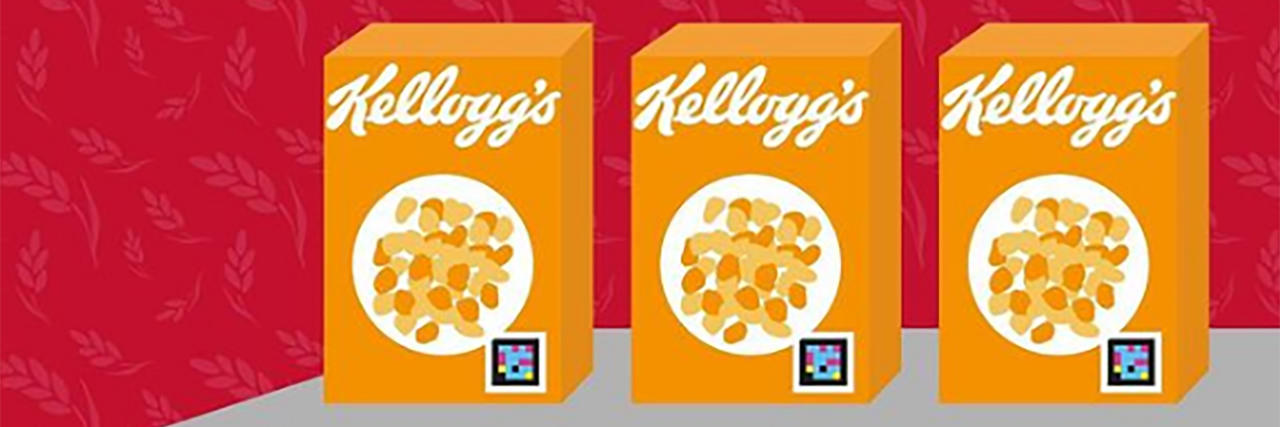On Thursday, July 8, 2021, Kellogg’s Europe announced via Instagram that they’ll be swapping out their traditional cereal boxes for ones that feature accessible technology for blind and partially sighted shoppers. The NaviLens technology will allow shoppers to scan the updated cereal boxes with a smartphone app. The app can spot the code from nearly 10 feet away and will also allow low-vision shoppers to choose to have product information read aloud to them. Kellogg’s Europe will gradually roll out these features beginning next year.
View this post on Instagram
The decision to include NaviLens technology on grocery products is revolutionary, especially in terms of accessibility. Though the technology may seem incredible on its own, the ways that NaviLens codes give blind and partially sighted shoppers more purchasing freedom are a huge step forward in a move towards universal accessibility.
Though some cities have taken steps towards accessibility for people who are blind or have partial vision — like chirping crosswalk signals and textured curb cuts — grocery stores have primarily remained inaccessible to blind shoppers. Boxes and other packaging contain small writing and similarly bright colors, so even partially sighted customers with the ability to see colors may need assistance with knowing exactly what they’re buying. And although screen-reading software makes online shopping accessible to many, the potential difficulties with shopping in brick-and-mortar grocery stores restrict access to blind people, who need and deserve the ability to casually walk into a grocery store and purchase their groceries as independently as possible.
Kellogg’s Europe’s decision to incorporate accessible technology has tremendous potential to benefit blind and partially sighted shoppers, but even though it’s undoubtedly a win, it’s just one step in making grocery stores (and the world as a whole) more accessible. The reality is that European shoppers of all vision levels will now be able to read their cereal boxes, but until other brands choose to incorporate technology that will help blind and partially sighted shoppers, the rest of the grocery store will remain virtually inaccessible. Hopefully, more Kellogg’s branches across the world will implement similar technology on their packaging — and a myriad of other brands will follow suit. The only way to make the grocery store a truly accessible place for blind and partially sighted shoppers is to expand the use of this technology across brands and across the globe.
In the quest to make the world universally accessible, many companies prioritize building ramps and installing elevators over implementing technology that can help blind and partially sighted people navigate the world, but Kellogg’s Europe’s use of accessible NaviLens technology will help people with low vision more easily shop brick-and-mortar grocery stores. Incorporating technology that makes packaging readable and ingredient lists accessible to all is revolutionary for the blind and partially sighted community, but it’s also just one of many important steps towards making the world more accessible for all. Only when other brands and regions adopt similar vision-accessible technology can the world truly be accessible to blind and partially sighted people — so hopefully, more companies worldwide Kellogg’s Europe’s lead in the near future.
Image via Instagram.

